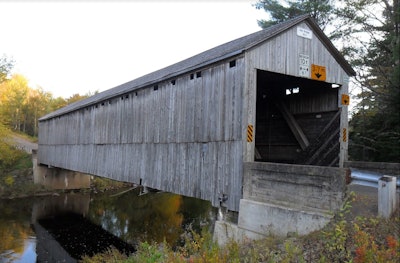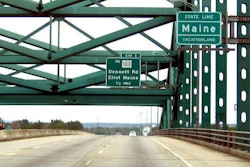 Photo credit: Eric Blair via Google Maps
Photo credit: Eric Blair via Google MapsResidents in Hoyt, New Brunswick, Canada, are angry after construction crews tearing down and replacing the flood-damaged historic Bell Bridge were seen burning the remnants of the bridge in a barrel, CBC reports. The 87-year-old covered bridge was completely demolished on January 19.
“I think they’re making a joke of it, a mockery,” Wayne Kirkpatrick, a farmer who has lived in the community his entire life, told the news agency. “There’s a lot of people in the community that would have liked to have a piece of that bridge just for a memento.”
Local residents had tried to save a portion of the historic bridge after it was deemed unsalvageable by the Department of Transportation and Infrastructure (DTI) due to severe flood damage incurred two weeks earlier.
Larry Welton, president of the Patterson Settlement Historical Society, told the news agency that he understands the bridge couldn’t be saved, but “If we could have got something from it to re-erect it at our historical site… we certainly would have liked to have it at our site to bring attractions in.”
According to the news agency, the DTI sent an email stating, “Everything will be salvaged from the site. Once the parts have been removed, staff will determine what, if anything, can be re-used.”
The construction crews were seen burning bridge boards on January 18 and 22 when temperatures plummeted to -5 to -9 degrees Celsius. Department spokesperson Jeremy Trevors said that it seems the crews were burning debris in order to stay warm.
“We will discourage that in the future, and we apologize if it offended anyone in the community,” Trevor wrote in an email, according to the news agency. “In the case of the Bell Bridge, the department managed to save a variety of items from the bridge, including signs and wood. These will be placed at one of DTI’s depots until we are able to work with the Department of Tourism Heritage and Culture on an approach for commemoration.”









